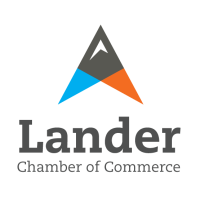Small businesses throughout Lander — from Main Street shops to local service providers — often run into friction they don’t immediately see. Slow approvals, scattered communication, and outdated payment processes can quietly drain hours and momentum.
TL;DR
Most bottlenecks are subtle: lagging signatures, multiple communication channels, unclear responsibilities, and paper-heavy payment workflows. Removing these frictions frees up time, boosts confidence, and helps businesses grow more smoothly.
A Quick Look at Common Slowdowns
|
Bottleneck Type
|
What It Looks Like
|
Why It Matters
|
Fix Direction
|
|
Approval Lag
|
Waiting on signatures or responses
|
Delays work
|
Simplify + standardize
|
|
Communication Drift
|
Using text + email + chat inconsistently
|
Creates rework
|
Consolidate channels
|
|
Payment Friction
|
Checks and manual invoices
|
Cash-flow dips
|
Shift to digital payments
|
|
Vendor Disarray
|
Missing details or unclear requests
|
Back-and-forth
|
Provide short briefs
|
|
Unclear Ownership
|
Task ambiguity
|
Repeated work
|
Assign responsibility
|
Where Slowdowns Hide
The biggest time losses are rarely dramatic. Instead, they show up in small, repetitive delays — hunting for a file, clarifying a simple detail, reminding someone to approve something. Each instance feels minor, but stacked together, they erode time and attention.
It’s common: a vendor waiting three days for a missing sentence, or a team member digging across three inboxes to find one attachment. These everyday frictions quietly cost businesses far more than they assume.
Checklist for Removing Everyday Friction
 Spot patterns in your latest delayed tasks.
Spot patterns in your latest delayed tasks.
 Centralize communication in one system, even a simple hub like Google Workspace.
Centralize communication in one system, even a simple hub like Google Workspace.
 Adopt two templates: one for approvals, one for vendor briefs.
Adopt two templates: one for approvals, one for vendor briefs.
 Use predictable digital payments, modeled after tools like Square.
Use predictable digital payments, modeled after tools like Square.
 Give every recurring task a clear owner.
Give every recurring task a clear owner.
 Run a quarterly review to catch new bottlenecks early.
Run a quarterly review to catch new bottlenecks early.
Approvals: A Surprisingly Large Bottleneck
Approvals are often the slowest part of a workflow because the process isn’t standardized. Missing files, unclear requests, and multi-channel communication cause small tasks to drag on.
Teams often improve this instantly using clear templates — something supported by resources like Asana, which offers sample formats for consistent internal requests.
When Contract Signing Becomes a Hidden Roadblock
Traditional contract signing methods — printing, mailing, scanning, or chasing someone for a signature — are deceptively slow. They increase the chances of errors, cause extra back-and-forth, and put deals on pause. Many small businesses simplify things by using secure electronic signing. If you're exploring options, you can consider this streamlined guide. It helps approvals move faster and with far less stress.
Other Time Drains You Might Recognize
-
Messages spread across multiple apps
-
Repeated vendor questions
-
Missing or outdated files
-
Work stalled because no one “owns” the next step
-
Re-entering the same info several times
Simple structure goes a long way. Even straightforward systems — like the planning guidance from Basecamp — help reduce confusion in multi-person workflows.
Useful Resources That Help Prevent Bottlenecks
To streamline operations without adding complexity, small-business owners often draw from:
Each offers small operational improvements that prevent recurring delays.
QuickBooks Online for Simpler Cash-Flow Visibility
Cash-flow clarity is often a quiet bottleneck — when owners don’t know what’s coming in or going out, decisions slow down. Many local businesses use QuickBooks Online to centralize invoices and expenses so there’s no guesswork and fewer end-of-month surprises.
FAQ
Q: What’s the easiest bottleneck to solve first?
A: Standardizing communication in one place.
Q: Do I need new software to streamline operations?
A: Not always. Sometimes a single shared template does the trick.
Q: Are digital signatures secure?
A: Yes — reputable tools use encrypted, compliant systems.
Q: How often should we review processes?
A: Quarterly works well for small teams.
Recap
-
Clear approvals keep work from stalling
-
Unified communication reduces confusion
-
Defined roles prevent rework
-
Faster payments stabilize cash flow
-
Templates remove repetitive questions
Most bottlenecks are small but persistent — and removing them creates big gains. By simplifying approvals, tightening communication, and modernizing basic workflows, Lander businesses can reclaim time, reduce stress, and grow with confidence.

![]()




